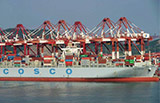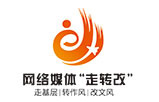Drug makers look East for cooperation
By Tom McGregor (chinadaily.com.cn) Updated: 2012-11-07 10:52
|
 |
The West has been recognized for its advances in healthcare. Western-based multinational pharmaceutical corporations have created drugs that save lives, cure illnesses and improve one's physical and mental well-being. People can enjoy longer life spans.
Many drug makers have generated substantial revenues at high profit margins by patenting its medicines. Funding research and development (R&D) of new drugs is costly and risky since scientific experiments don't guarantee good results. Most drugs that initially get developed have either failed during research tests or with receiving approval from government inspection agencies.
Even when a new prescription drug does win approval, the product must undergo a marketing campaign and capture support from the medical community. From start to finish, when a lab technician formulates an idea for a new drug then to the time it gets sold to a patient could take around seven to ten years or longer. The entire process takes an investment that could run up to millions of dollars.
The investment could get a good return on investment along with intellectual property rights protections. Many drug corporations have considered working with Chinese companies to increase their capital liquidity for its R&D labs or selling its products to consumers living in the world's second largest economy.
Related: Drug firms pursue joint R&D
Cooperation has proven effective. The French company, bioMerieux, which specializes in vitro diagnostics for medical and industrial applications, had teamed up with Shanghai-Kehua Bio-engineering Co Ltd, a major Chinese diagnostics company in 2007, according to China Daily.
Thierry Bernard, high-level bioMetrieux executive, said, "Joint venture agreements with Chinese companies are mutually beneficial in their efforts to expand their products and promote their technologies around the world."
However Bernard points out, "The Chinese companies don't need our money. They have plenty of cash," he said. "But there is still a bias against Chinese companies by some US and European counterparts, which still doubt the merits of forming mergers with, or making acquisitions of companies here."
Bernard explains the bias could cause multi-nationals would lose out on money-making opportunities. He added, "We certainly need their experience in the local market, and their knowledge of emerging markets."
Cash-rich Chinese companies can help pay for more R&D projects. Hence, some companies have already cast aside their bias.
"British drug giant AstraZaneca PLC and a small US drug developer, Ironwood Pharmaceuticals Inc, said (recently) that they are teaming up to develop and then market Ironwood's new drug for irritable bowel syndrome in China," as reported by NASDAQ.
It added, "Ironwood based in Cambridge, Mass., applied to China's State Food and Drug Administration in May for permission to do a late-stage study of the drug in adult patients."
The drug industry as a whole appears to be facing difficulties with producing revenue growth since too few drugs are getting developed and patent expirations on blockbuster drugs are coming soon.
Nevertheless, "China's pharmaceuticals market expected to grow at a 15-18 percent pace through 2016, totaling 165 by the end of that period, with roughly $3.2 billion spent on diabetes drugs," according to Bloomberg.
All types of drugs would sell well in the Chinese market, but multi-national corporations must realize that they must provide drugs at more affordable prices. Expecting the Chinese to pay the same price as Americans do would not be practical.
In the US, health insurance companies cover most drug expenses for its clients. Per capita GDP income is also significantly higher than in China. A more effective pricing strategy is necessary for success in the Chinese market.
The disparity is large between the two nations. In a report, the International Diabetes Federation has estimated that $194 is spent annually on the average diabetes patient in China, while more than $5,000 is spent helping each US patient."
Many Chinese don't earn an annual salary of $5,000 a year. Therefore, multinational drug firms should understand the complexities, and if so they can succeed. The best solution would be to upgrade cooperation.
The views do not necessarily reflect those of China Daily.
McGregor@chinadaily.com.cn
Tom McGregor's previous articles:
Chinese eyes sparkle over silver
Germany opens doors for Chinese workers
- DeePoon gears up for wireless VR market boom
- China's jobs data offer glimpse into crystal ball
- China industrial output expands 6% in April
- China retail sales rises 10.1% in April
- China's fixed-asset investment up 10.5% in Jan - April
- China property investment rises 7.2% in Jan - April
- China's strategic economic planning worth studying in LatAm, says ECLAC
- Shanghai to build more free charging posts for electric cars

















